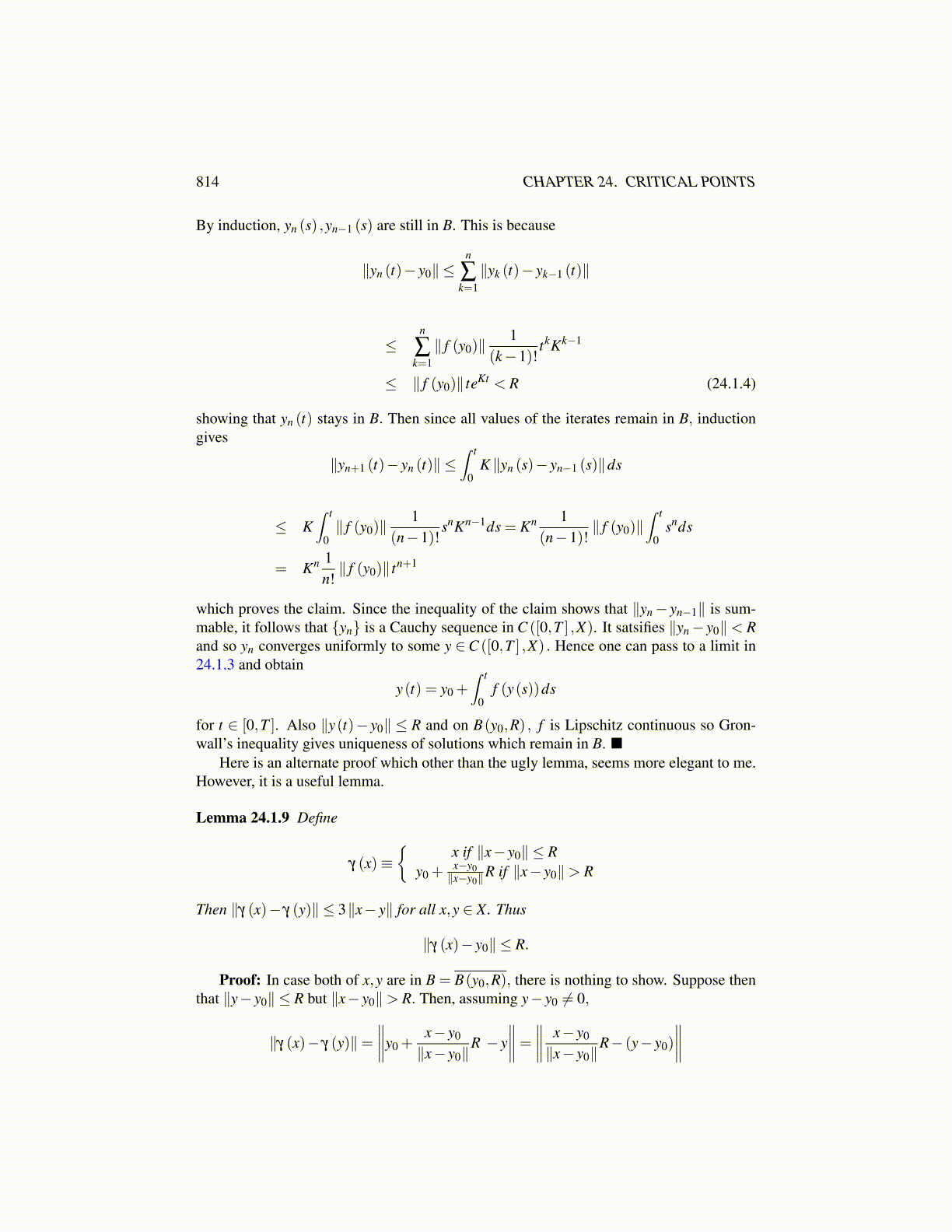
814 CHAPTER 24. CRITICAL POINTS
By induction, yn (s) ,yn−1 (s) are still in B. This is because
∥yn (t)− y0∥ ≤n
∑k=1∥yk (t)− yk−1 (t)∥
≤n
∑k=1∥ f (y0)∥
1(k−1)!
tkKk−1
≤ ∥ f (y0)∥ teKt < R (24.1.4)
showing that yn (t) stays in B. Then since all values of the iterates remain in B, inductiongives
∥yn+1 (t)− yn (t)∥ ≤∫ t
0K ∥yn (s)− yn−1 (s)∥ds
≤ K∫ t
0∥ f (y0)∥
1(n−1)!
snKn−1ds = Kn 1(n−1)!
∥ f (y0)∥∫ t
0snds
= Kn 1n!∥ f (y0)∥ tn+1
which proves the claim. Since the inequality of the claim shows that ∥yn− yn−1∥ is sum-mable, it follows that {yn} is a Cauchy sequence in C ([0,T ] ,X). It satsifies ∥yn− y0∥< Rand so yn converges uniformly to some y ∈C ([0,T ] ,X) . Hence one can pass to a limit in24.1.3 and obtain
y(t) = y0 +∫ t
0f (y(s))ds
for t ∈ [0,T ]. Also ∥y(t)− y0∥ ≤ R and on B(y0,R) , f is Lipschitz continuous so Gron-wall’s inequality gives uniqueness of solutions which remain in B.
Here is an alternate proof which other than the ugly lemma, seems more elegant to me.However, it is a useful lemma.
Lemma 24.1.9 Define
γ (x)≡{
x if ∥x− y0∥ ≤ Ry0 +
x−y0∥x−y0∥
R if ∥x− y0∥> R
Then ∥γ (x)− γ (y)∥ ≤ 3∥x− y∥ for all x,y ∈ X. Thus
∥γ (x)− y0∥ ≤ R.
Proof: In case both of x,y are in B = B(y0,R), there is nothing to show. Suppose thenthat ∥y− y0∥ ≤ R but ∥x− y0∥> R. Then, assuming y− y0 ̸= 0,
∥γ (x)− γ (y)∥=∥∥∥∥y0 +
x− y0
∥x− y0∥R − y
∥∥∥∥= ∥∥∥∥ x− y0
∥x− y0∥R− (y− y0)
∥∥∥∥